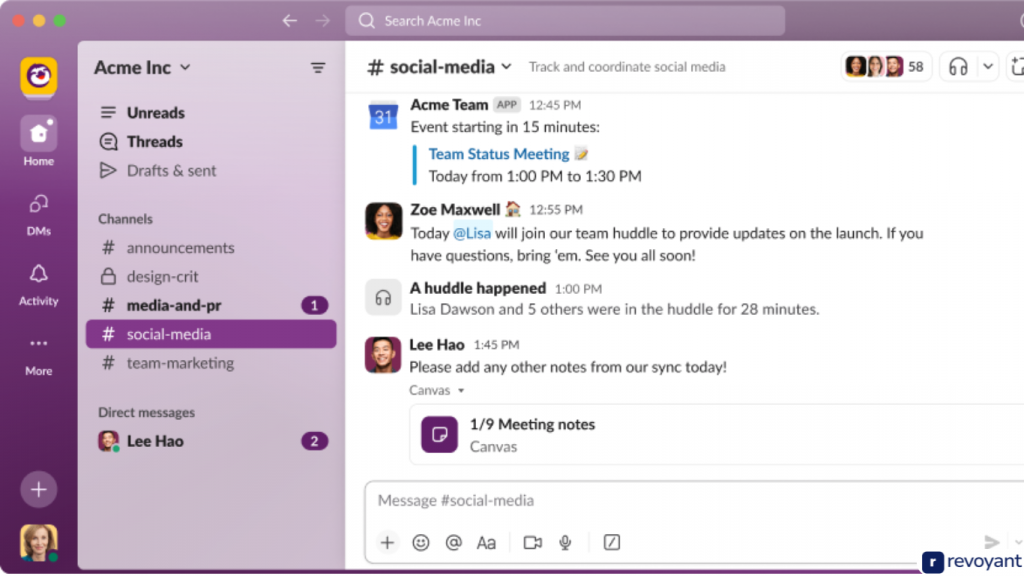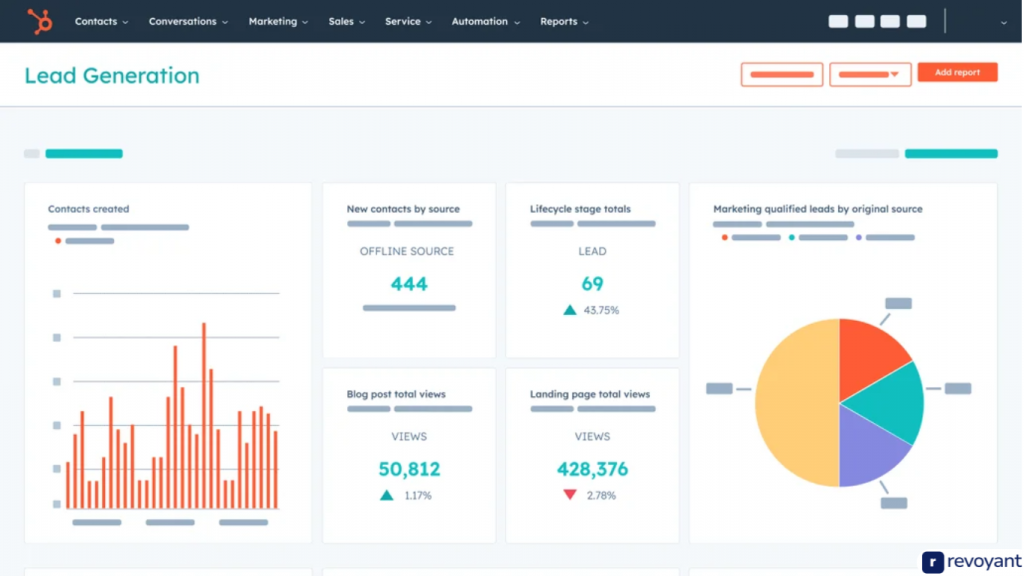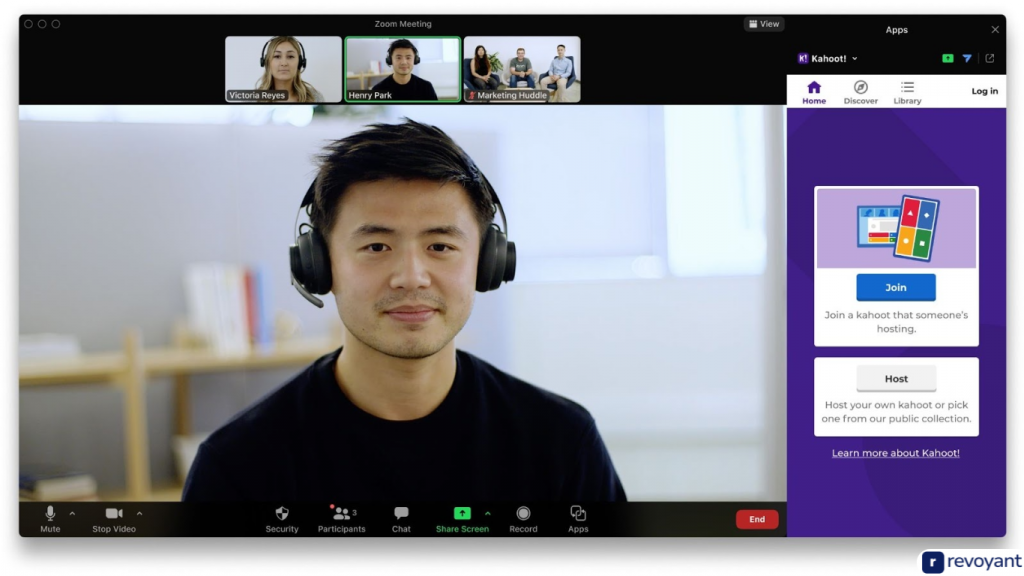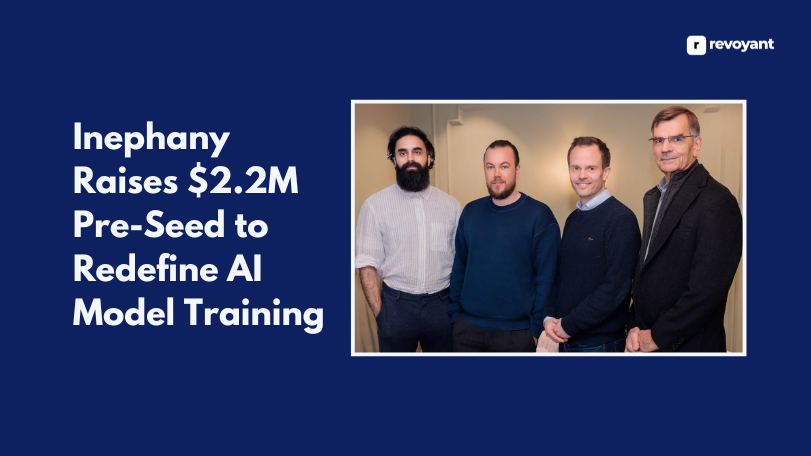Mastering SaaS demand generation is crucial for driving growth and ensuring long-term success. We have written a detailed guide below to understand the intricacies of demand generation within the SaaS industry, highlighting key strategies, tools, best practices, and real-world case studies to illuminate effective approaches.
Key Takeaways
- Understanding the customer journey allows for the creation of tailored content that resonates with prospects at each stage, enhancing engagement and conversion rates.
- A/B testing different strategies helps identify what works best, enabling companies to refine their approach based on data-driven insights.
- Actively soliciting and incorporating user feedback can inform demand generation strategies and foster stronger relationships with customers.
- A cohesive approach between sales and marketing teams ensures shared goals, consistent messaging, and a smoother lead nurturing process.
- Employing a mix of tactics—such as content marketing, SEO, account-based marketing, and webinars—can create a holistic demand generation strategy that reaches prospects effectively.
- Companies like Slack demonstrate the importance of fostering a community around your product, which can drive organic growth and customer loyalty.
Understanding Demand Generation in SaaS
Demand generation refers to the marketing activities that create awareness and interest in a company’s products or services. In the B2B SaaS sector, this involves not just attracting potential customers but nurturing them through the sales funnel. Demand generation focuses on building relationships and providing value to prospects, ultimately leading to conversions. Let’s take a look at the importance of Demand Generation in B2B SaaS.
Targeted Outreach
In the B2B SaaS landscape, targeted outreach is essential for navigating the intricate sales cycles that characterize enterprise-level sales. This involves not just reaching a broad audience, but honing in on specific segments that are most likely to benefit from your solution. Here’s how to enhance your targeted outreach:
Segmentation
- Identify Buyer Personas: Develop detailed profiles of your ideal customers based on demographics, industry, company size, pain points, and buying behaviors. This helps in crafting messages that resonate with specific audiences.
- Use Data Analytics: Leverage data from CRM systems and website analytics to understand customer behaviors and preferences. Identify trends that can inform your targeting strategy.
- Tailored Messaging: Craft personalized messages that speak directly to the needs and challenges of each segment. Use case studies, testimonials, and relevant content that reflect their specific pain points and objectives.
Multi-Channel Approach
- Email Campaigns: Segment your email lists and deliver tailored content that addresses the unique challenges of each segment. Consider using dynamic content to personalize emails further.
- Social Media Targeting: Platforms like LinkedIn allow for precise targeting based on job title, industry, and interests. Use sponsored posts to reach your desired audience with tailored messaging.
- Account-Based Marketing (ABM): Focus on high-value accounts by creating personalized campaigns that address their specific needs. This involves deep research into each target account to inform your outreach strategies.
Lead Nurturing
Building long-term relationships with potential customers is vital for conversion in B2B SaaS. Lead nurturing involves a series of targeted marketing actions aimed at guiding prospects through the sales funnel.
Educational Content
- Value-Driven Resources: Provide high-quality content such as whitepapers, webinars, and instructional videos that educate leads on industry trends and best practices related to your solution.
- Personalized Follow-Ups: Use automated but personalized email follow-ups after a lead engages with your content. Address their specific questions or concerns based on their previous interactions.
Engagement Strategies
- Drip Campaigns: Implement drip marketing strategies where leads receive a series of automated emails over time, gradually educating them about your product and its benefits.
- Interactive Tools: Offer tools like calculators, assessments, or quizzes that engage leads and provide personalized insights based on their input. This not only nurtures the lead but also positions your brand as a helpful resource.
Feedback Loops
- Regular Check-Ins: Schedule periodic check-ins with leads, either through emails or calls, to gather feedback and assess their evolving needs.
- Customer Journey Mapping: Continuously map the customer journey to identify key touchpoints and opportunities for further engagement, ensuring that you’re nurturing leads effectively through each stage of their decision-making process.
Brand Authority
Establishing brand authority is crucial in the B2B SaaS sector, where trust and reliability are paramount. A strong brand presence not only attracts new customers but also fosters loyalty among existing ones.
Consistent Content Creation
- Thought Leadership: Publish insightful articles, research papers, and opinion pieces on industry trends. This positions your brand as an authority and builds credibility within your niche.
- User-Generated Content: Encourage satisfied customers to share their experiences through reviews, testimonials, and case studies. This authentic content enhances your brand’s reputation and attracts potential customers.
Engagement with the Community
- Industry Events and Webinars: Actively participate in or host industry events, conferences, and webinars. This not only showcases your expertise but also connects you with industry leaders and potential customers.
- Social Media Interaction: Engage regularly with your audience on social media platforms. Respond to comments, participate in discussions, and share relevant insights to foster a community around your brand.
Trust-Building Practices
- Transparent Communication: Maintain open lines of communication with your audience, addressing concerns and questions promptly. Transparency builds trust, especially in a market where customers are wary of hidden costs or conditions.
- Consistent Branding: Ensure that your messaging, visuals, and tone remain consistent across all channels. A cohesive brand image strengthens recognition and reinforces your authority in the market.
Key Strategies for Effective SaaS Demand Generation
With a multitude of potential customers and complex buying processes, SaaS companies must employ targeted strategies that resonate with their audiences.
Key strategies such as content marketing, search engine optimization (SEO), account-based marketing (ABM), social media engagement, email marketing, and webinars are vital components of a comprehensive demand generation plan. By implementing these strategies thoughtfully, businesses can create meaningful connections with prospect.
Value-Driven Content Creation
- Whitepapers and eBooks: These in-depth resources allow you to explore complex topics relevant to your audience. They should present well-researched insights, case studies, and actionable strategies. Offer them as gated content to capture lead information.
- Case Studies: Showcase success stories from existing customers to illustrate the effectiveness of your solution. Highlight specific challenges, the solutions you provided, and measurable outcomes. This builds credibility and trust among potential customers.
- Blogs: Regularly update your blog with articles that address current trends, common pain points, and industry insights. This not only improves your SEO but positions your brand as a knowledgeable resource in the industry.
- Webinars: Hosting webinars allows you to engage with your audience in real-time. Choose topics that resonate with your audience’s challenges and provide valuable insights. Invite industry experts to co-host, which can expand your reach.
Distribution and Promotion
- Content Syndication: Distribute your content on platforms like Medium or industry-specific websites to reach a broader audience.
- Repurposing Content: Transform whitepapers into infographics, videos, or podcasts. This maximizes the value of your content and caters to different preferences.
- Engagement: Encourage comments and discussions on your content. Responding to questions and engaging with readers can foster a community around your brand.
Search Engine Optimization (SEO)
On-Page SEO
- Keyword Research: Use tools like SEMrush or Ahrefs to identify keywords that are relevant to your SaaS solution. Focus on long-tail keywords that match your audience’s search intent.
- Meta Tags and Descriptions: Optimize meta titles and descriptions to improve click-through rates. Ensure they include relevant keywords and are compelling enough to entice users to click.
- Content Optimization: Naturally incorporate keywords into your content without compromising quality. Use headings, bullet points, and images to enhance readability.
Off-Page SEO
- Backlink Building: Secure backlinks from reputable sites through guest blogging, partnerships, or by creating shareable content. This enhances your domain authority and improves search rankings.
- Social Signals: Share your content on social media platforms to drive traffic and encourage shares. Increased visibility can lead to more backlinks and higher search rankings.
- Local SEO: If applicable, optimize for local searches by including location-based keywords and registering your business on Google My Business.
Account-Based Marketing (ABM)
Identifying Target Accounts
- Ideal Customer Profile (ICP): Develop an ICP that includes firmographics (industry, company size, location) and technographics (technology stack, buying patterns). This helps in targeting the right accounts.
- Research and Insights: Use tools like LinkedIn Sales Navigator to gather insights on target accounts, including recent news, company goals, and key decision-makers.
Tailored Marketing Strategies
- Personalized Campaigns: Create customized marketing campaigns for each target account. This can include personalized emails, tailored content, and direct outreach from sales representatives.
- Multi-Touch Campaigns: Utilize a combination of channels (email, social media, direct mail) to reach decision-makers multiple times. This increases the likelihood of engagement.
- Account-Specific Content: Develop content specifically for target accounts, such as personalized case studies or tailored solutions that address their unique challenges.
Social Media Engagement
Building a Presence
- Platform Selection: Focus on platforms where your target audience is most active, such as LinkedIn for B2B professionals.
- Content Sharing: Regularly share insights, articles, and updates about your product. Use engaging visuals and infographics to capture attention.
Community Engagement
- Join Industry Groups: Participate in LinkedIn or Facebook groups relevant to your industry. Offer insights, answer questions, and share your content to position yourself as an authority.
- Live Discussions: Host live Q&A sessions or discussions on social media to engage with your audience directly. This allows you to address their concerns and showcase your expertise.
Email Marketing
Segmentation and Targeting
- Segment Your List: Divide your email list based on criteria such as demographics, engagement level, and buyer journey stage. This allows for more targeted messaging.
- Personalization: Use dynamic content to personalize emails based on the recipient’s behavior and preferences, increasing open and conversion rates.
Campaign Strategies
- Nurture Campaigns: Develop automated drip campaigns that provide valuable content over time, gradually moving leads closer to a purchasing decision.
- Re-engagement Campaigns: Target leads that haven’t engaged recently with tailored content designed to reignite their interest in your solution.
Webinars and Live Demos
Hosting Effective Webinars
- Choose Relevant Topics: Select topics that address common challenges faced by your audience. This could include industry trends, best practices, or product use cases.
- Engagement During Webinars: Use polls, Q&A sessions, and chat features to engage attendees. Encourage participation to make the experience interactive.
Showcasing Your Solution
- Live Demos: Offer live demonstrations of your software to showcase its features and benefits. Tailor demos to address specific pain points of attendees.
- Follow-Up After Events: After webinars or demos, send personalized follow-up emails thanking attendees and providing additional resources or next steps.
Best Practices for SaaS Demand Generation
Effective demand generation in the SaaS sector requires a strategic approach that resonates with potential customers at every stage of their journey. Here are some best practices to consider:
Focus on the Customer Journey
Understanding the customer journey is paramount for creating targeted content that speaks to prospects at various stages—from awareness to consideration and decision-making.
- Mapping the Journey: Identify the key touchpoints and decision-making processes of your target audience. This helps you understand their needs, pain points, and preferred content formats at each stage.
- Tailored Content Creation: Develop specific content types for each phase:
- Awareness Stage: Use blog posts, infographics, and introductory webinars to educate prospects about common challenges.
- Consideration Stage: Offer case studies, comparison guides, and detailed webinars that highlight how your solution can address their specific needs.
- Decision Stage: Provide personalized demos, free trials, and testimonials to reinforce the value of your product.
- Continuous Optimization: Regularly review and update your content strategy based on feedback and changing market conditions to ensure it remains relevant.
Test and Iterate
A/B testing and continuous optimization are crucial for refining your demand generation strategies.
- Experimentation: Regularly test different elements of your campaigns—such as email subject lines, call-to-action buttons, landing page designs, and content formats—to see what resonates best with your audience.
- Data Analysis: Use analytics tools to track performance metrics, such as open rates, click-through rates, and conversion rates. Analyze the data to identify trends and insights that can inform future campaigns.
- Agility: Be prepared to pivot based on test results. If a particular approach isn’t yielding the desired results, don’t hesitate to adjust your tactics quickly to better meet your audience’s preferences.
Leverage User Feedback
User feedback is a valuable resource for shaping your demand generation efforts and enhancing customer experience.
- Surveys and Polls: Regularly solicit feedback through surveys or polls after engagements, such as webinars or product demos. Ask specific questions about what they found helpful or what could be improved.
- Customer Interviews: Conduct interviews with current customers to gather in-depth insights into their experiences. Understanding their journey can provide valuable information on how to better attract and engage new prospects.
- Incorporate Feedback: Use the feedback collected to refine your content, messaging, and overall strategy. Highlighting features or addressing pain points that users care about can significantly improve your effectiveness.
Align Sales and Marketing
Alignment between sales and marketing teams is crucial for a cohesive demand generation strategy.
- Shared Goals: Ensure that both teams work towards common objectives, such as lead quality and conversion rates. Establish key performance indicators (KPIs) that reflect shared success.
- Regular Communication: Facilitate open lines of communication between teams through regular meetings and shared platforms. This encourages collaboration and ensures that everyone is informed about ongoing campaigns and lead statuses.
- Feedback Loops: Create mechanisms for sales to provide feedback to marketing about lead quality and messaging effectiveness. This helps marketing fine-tune their campaigns based on real-world sales experiences.
Case Studies: Real Companies in SaaS Demand Generation
Case studies of successful companies provide valuable insights into how different approaches can lead to remarkable growth and engagement.
Slack
Slack began with a product-led growth strategy, prioritizing user experience and organic adoption. By focusing on creating a seamless and intuitive platform, Slack encouraged teams to use the software internally, which naturally led to wider adoption within organizations.
To further enhance user engagement, Slack invested heavily in content marketing, producing blogs, tutorials, and user stories that not only educated users but also fostered a sense of community. This emphasis on customer feedback allowed them to iterate quickly, addressing user needs and improving the platform continuously.
As a result, Slack cultivated a loyal user base that not only used the product but also became its advocates, driving organic growth through word-of-mouth and referrals.

HubSpot
HubSpot has become synonymous with inbound marketing, leveraging a comprehensive content strategy to attract and nurture leads. The company provides an extensive range of free resources, including blogs, eBooks, webinars, and online courses that educate potential customers about marketing best practices and the tools available to them.
By delivering valuable content that addresses common pain points, HubSpot not only captures leads but also establishes itself as an authority in the marketing software space. Their commitment to educating their audience has created a community of engaged users who turn to HubSpot for guidance, fostering loyalty and trust.
This approach has enabled HubSpot to build a strong brand presence and maintain a competitive edge in the crowded SaaS market.

Zoom
During the COVID-19 pandemic, Zoom experienced unprecedented growth by effectively leveraging webinars and free offerings. As remote work became the norm, the demand for reliable communication tools surged.

Zoom responded by providing free access to its platform for educational institutions and offering free webinars to educate users on how to maximize the software’s capabilities. This strategy not only showcased Zoom’s value but also allowed potential customers to experience the product firsthand without barriers.
By prioritizing user engagement and providing exceptional value during a critical time, Zoom rapidly expanded its customer base and solidified its position as a leading video conferencing solution. The company’s ability to adapt quickly to the changing landscape demonstrated the power of responsive demand generation strategies in driving growth.
Conclusion
Mastering demand generation in B2B SaaS requires a strategic blend of targeted outreach, content creation, and technology. By understanding your audience, employing effective strategies, and continuously refining your approach, you can create a sustainable demand generation engine that drives growth and engagement.
Frequently Asked Questions
1. What is the primary goal of demand generation in SaaS?
The primary goal is to create awareness, generate interest, and nurture leads through the sales funnel to drive conversions.
2. How does content marketing play a role in demand generation?
Content marketing helps educate and engage potential customers, establishing your brand as a trusted authority while addressing their pain points.
3. What metrics should I track for effective demand generation?
Key metrics include website traffic, conversion rates, lead quality, and customer engagement levels.
4. How can I ensure alignment between sales and marketing teams?
Regular communication, shared goals, and collaborative strategies can foster alignment between sales and marketing efforts.





